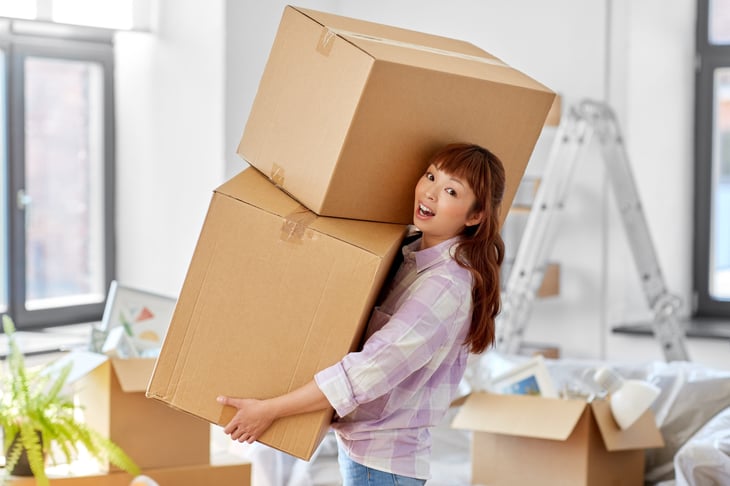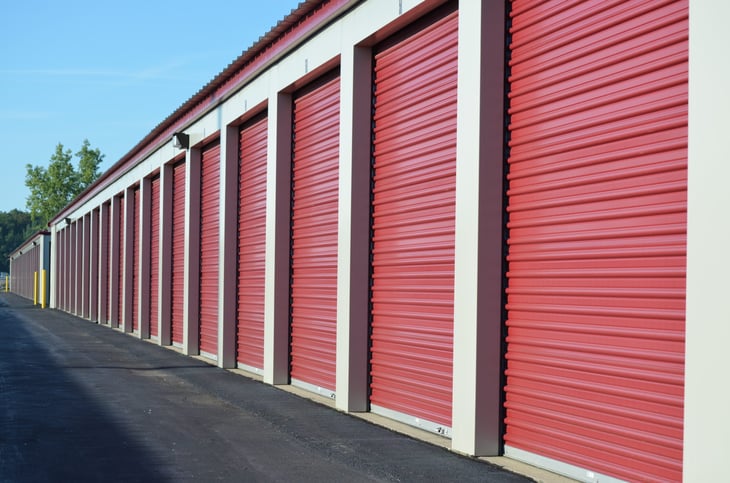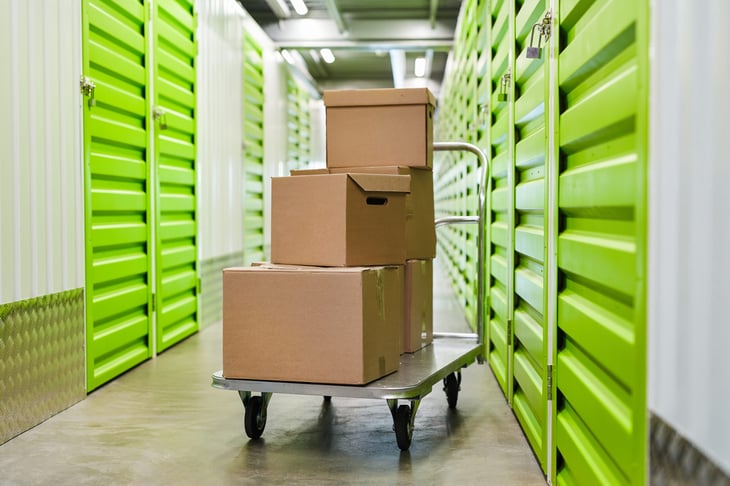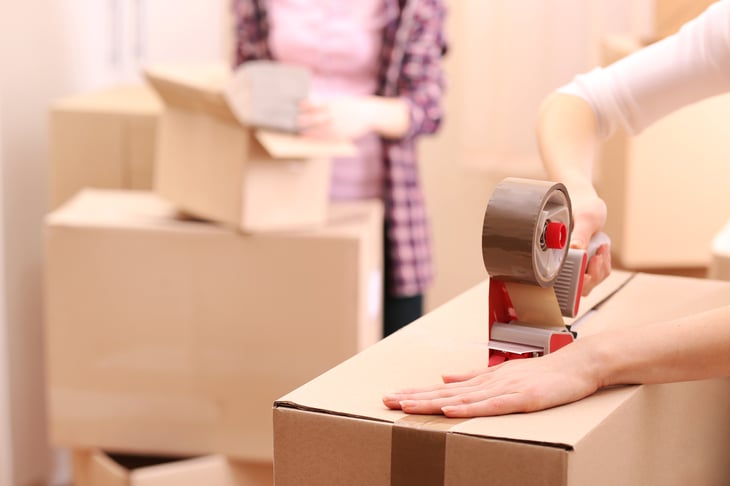
Editor's Note: This story originally appeared on Point2.
Moving can be a challenging and overwhelming process, with numerous tasks to handle and decisions to make. Things can get even more complicated when moving also involves selling your home and purchasing a new one.
That’s a lot of logistics to handle, from staging and showing the old home to redecorating the new one and finally being able to move all your stuff.
One way to ease the burden and ensure a smoother transition is by using self-storage.
Self-storage facilities offer a convenient solution for temporarily storing your belongings during a move — but also for long-term storage if moving also involves downsizing your home.
Here’s what you need to know about using self-storage while moving, and beyond, plus tips on how to select the right unit for your needs.
Streamline the Moving Process

Self-storage units provide a secure space to store your belongings while you navigate the logistics of your move.
Whether you need to declutter your home for downsizing or are just bridging the gap between moving out and moving in, self-storage offers a flexible storage solution.
Moving to a Bigger or Similarly Sized Home

Using self-storage allows you to start the packing and moving process ahead of time, weeks prior to moving day.
Pack belongings you don’t need daily, such as out-of-season clothing, books, tools and equipment, kitchen gear and less-than-essential furniture, and take them to a storage unit located close to your new home.
This trick works great for long-distance moves: You can ship your packed belongings to a storage facility in your new city, and, by the time moving day comes along, most of your stuff is already there, requiring just a short trip from the storage facility to the new home.
Even better, if you’re concerned about the safety of your valuable or fragile items during the moving process, self-storage provides a secure environment. Things like expensive furniture, delicate electronics, artwork, collectibles, antiques and so on, can easily get damaged if moved to a home that’s a work in progress.
Whether you are planning a full remodel of the new home or just minor repairs, you can keep your valuables out of the way in self- storage.
With features like surveillance cameras, access controls and individual unit locks, you can have peace of mind knowing your possessions are protected while you are getting your new home ready.
Downsizing

The benefits of renting a self-storage unit extend beyond moving day. If you move to a smaller home, chances are you won’t be able to comfortably fit all your belongings into fewer square feet.
However, a self-storage unit allows you to hold on to your stuff while also enjoying an uncluttered, tidy home.
From sports equipment and holiday decorations to out-of-season clothing, tools, collectibles and much more, you can keep items in storage that are important but not needed every day.
How Much Does Self-Storage Cost?

Self-storage street rates for a non-climate-controlled 10-foot-by-10-foot unit hover around $128 per month at a national level.
However, you might end up paying significantly more or significantly less than that. Self-storage costs are influenced by different factors, such as local demand and availability, which means they vary depending on where you live.
For example, a 10-foot-by-10-foot self-storage unit in New York City costs around $255 per month — almost double the national average.
The same type of storage unit in Oklahoma City, Oklahoma, on the other hand, is just $80 per month.
The costs can differ in the same city as well, based on the size of the unit, obviously, but also on amenities, such as climate-controlled units versus non-climate-controlled ones.
Choosing the Right Self-Storage Unit

It’s important to choose the right self-storage unit for your needs (in terms of size, amenities and location) in order to make the most of this service.
Begin by evaluating the size and quantity of items you plan to store. This assessment will help determine the appropriate unit size and prevent you from paying for more space than necessary.
A 10-foot-by-10-foot self-storage unit is one of the most popular choices among self-storage customers, and for good reasons: It’s a versatile size (about half of a standard garage) that allows you to keep a variety of belongings, from bulky ones like furniture and appliances to boxes with books, kitchen gadgets and other small items.
This unit size is suitable for long-term storage as well, as it offers ample space and is good value for the money.
If you are moving and plan on storing most of your possessions short term, you’ll most likely need a different unit size.
In the case of one- or two-bedroom homes, a 10-foot-by-15-foot storage unit is the right choice, as it can hold most of the furniture and other belongings from smaller homes. However, when moving a larger home with multiple bedrooms, you will need a larger unit. A 10-foot-by-20-foot self-storage unit, for example, is big enough to hold everything in a home with three or more bedrooms.
Other Self-Storage Considerations

Unit size is not the only factor that comes into play in choosing a unit. Consider if you need climate-controlled storage, especially if you have sensitive items such as electronics, wooden furniture or artwork.
Climate-controlled units maintain a consistent temperature and humidity level, protecting your belongings from extreme weather conditions. This type of amenity is even more important if you plan to store some of your belongings long term.
To make things easier for you in terms of dropping off and picking up belongings, choose a self-storage facility conveniently located to your residence. Additionally, consider factors such as operating hours and accessibility. Some facilities offer 24/7 access, which can be beneficial if you require frequent access to your stored items.
Don’t forget to investigate the security features as well. Look for properties with well-lit premises, surveillance cameras, secure access controls and sturdy unit locks. A facility with strong security measures will provide added confidence in the safety of your stored items.
During the chaos of a move, self-storage can be a valuable resource to simplify the process and protect your belongings. By selecting the right self-storage unit, you can ensure your items are safely stored until you’re ready to settle into your new home.





Add a Comment
Our Policy: We welcome relevant and respectful comments in order to foster healthy and informative discussions. All other comments may be removed. Comments with links are automatically held for moderation.